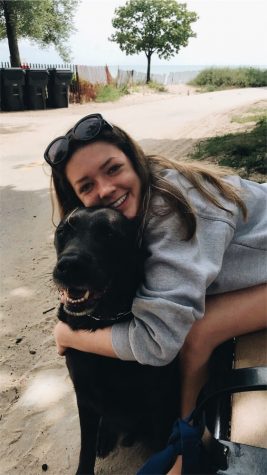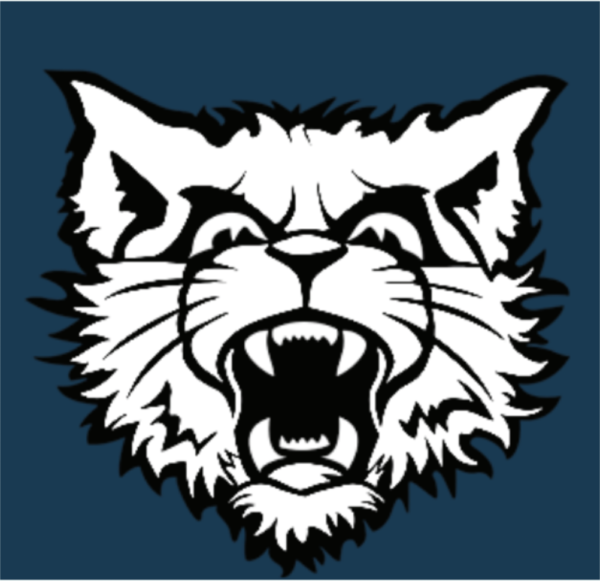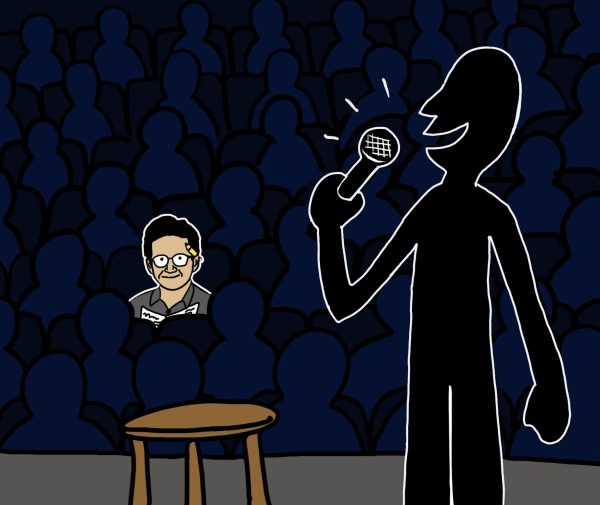Mad style: fall fashion
September 27, 2019
With fashion week and fall fashion around the corner, let’s take a look at prominent influences on the fashion industry right now: the 1980s and “androgyny” (fashion that doesn’t fit into a gender binary). These two major impacts on trending styles will be seen on the runway and even in the Evanston community. Both trends are outlets for bold or subtle expression and give a variety of ways to express individuality through fashion.
Trends recycle. Just as the 1960s hippie look came back in the early 2000s with low-rise jeans and tight tops, styles from other major eras are returning in 2019. Currently, the 1980s have emerged once more with its vibrant colors, contrast, statement pieces, shoulder pads and high waists. From punk rock to high class, the 80s were a time of bold fashion and personal expression, and its influence is affecting trends today. Even “mom jeans” (loose fitting denim pants) have come back after disappearing for a decade or two. You’ll be able to find high school students and adults repping bright colors, loose fitting, bold pants and shirts everywhere this fall. Finding your parents’ old clothes from college is now the peak of modern trends. One thing is for certain: the 1980s are back and better than ever.
The awareness around climate change has also promoted the resurgence of 80s fashion. With a generation of increasingly more climate-conscious people, thrifting and upcycling clothes is common in today’s young adults. “Vintage” 1980s clothing can easily be found in upcycled clothing places, and it makes high end fashion trends accessible and cheap. Not only can you find inexpensive 80s clothes, but they can be found on the runway and in high end fashion as well. Since the 80s was a versatile and unique time period in fashion, it is no surprise we see a sweeping comeback of high-waisted mom jeans, loose and colorful shirts and bold statement pieces. Even shoulder pads and glitter are making an appearance again on recent runway shows such as Brandon Maxwell, Piotrek Panszczyk and Beckett Fogg’s brand, Area and Jeremy Scott who designed a line resembling 1980s sci-fi.
“I definitely see the 80s influence. As for shopping at thrift stores, I see there’s a recent push in the fashion world to be more eco- friendly since it’s not an industry that’s very good for the environment,” fashion teacher Theresa Houston says.
As fashion weeks around the world begin, a strong influence from the 80s is expected. Now, high fashion is no longer staying in the boundaries of gender. “Androgynous” clothing fits no specific gender It is a way for people identifying as nonbinary to have an expressive outlet in fashion. Examples of “androngynous clothing” include button down shirts, especially with flowy patterns, known as “camp shirts”. In addition, baggy pants, graphic t-shirts and statement accessories have become increasingly common with high end designers. The same blazer on multiple people of different identities has not only gained acceptance in the mainstream, but is also seen as a beautiful and creative form of expression.
“Androgynous” clothing brands and trends are also the result of a more accepting and unique society. According to the New York Times, a California study showed that 27% of young adults (16-20) identify with a non-conforming style. Big clothing brands, department stores and mainstream companies like Old Navy, Forever 21, Target, Macy’s and Kohl’s all are marketing and providing gender-neutral clothing in their stores. High end brands such as Gucci, Balenciaga, Off-White, Saint Laurent and Givenchy always work to be at the head of social and political movements, which is another reason why they were quick to adopt the new era of non-conforming style. Models in these shows do not always conform to a gender binary, women walk the mens runways and mens in the women’s, along with other models that don’t conform to a specific gender. NotEqual, FLAVNT, Muttonhead, TooGood London and One DNA are all brands that carry solely non-gender conforming clothing.
“I think it’s giving people a lot more liberties in what they want to wear. It’s kind of hard to dress only masculine or feminine, so I think androgyny helps people not have to fit into a certain category, especially at ETHS when we claim to be a really progressive school. It definitely makes an appearance here,” junior Avery Davis says.
Fashion, in all forms of expression is meant to be an outlet for individuality. At ETHS, students are encouraged to express themselves through the clothes they wear making broad forms of fashion even more common and interesting to see in peers. Bold styles and a 1980s twist on outfits make this year all the more fascinating to watch as trends evolve.





















